For months now, large parts of Australia have been blanketed in smoke as the nation endures a devastating bushfire season that has destroyed more than 2,000 homes and claimed at least 26 lives.
For a fortnight, the nation's capital had the world's worst air quality among all cities that publish records. Canberra hospitals abandoned some procedures while babies were born into smoky birthing suites. This week Adelaide's air quality has become the 11th worst in the world as smoke from the Kangaroo Island bushfires, which have killed two people, hovers over the South Australian capital.
Professor Clare Murphy from the School of Earth, Atmospheric and Life Sciences at the University of Wollongong says the number of people who have been exposed to high levels of smoke pollution over the past few months in Australia is “unprecedented”.
“The pollution levels are extremely high and some of the levels we’re seeing in [some cities] are not dissimilar to what you’re seeing on the fire ground,” Murphy told BuzzFeed News.
In addition to the fine particles in the air that are damaging to health, bushfire smoke contains toxic gases including carbon monoxide, formaldehyde, acrolein and hydrogen cyanide, she said.
Murphy, along with six other experts, have answered your questions about the bushfire smoke.
Professor Bruce Thompson is a respiratory physiologist and dean of the School of Health Sciences at Swinburne University.
Dr Brian Oliver is a respiratory disease expert at the University of Technology Sydney.
Dr Julia Crawford is a vet and president of the Australian Veterinary Association.
Professor Yuming Guo is the head of the Climate, Air Quality Research (CARE) Unit, School of Public Health and Preventive Medicine at Monash University.
Marg Gordon is an asthma and respiratory educator at the National Asthma Council Australia.
Dr Nisha Khot is clinical director of obstetrics at Djerriwarrh Health Service in Victoria.
"Can I still go for a run when it is smoky?"
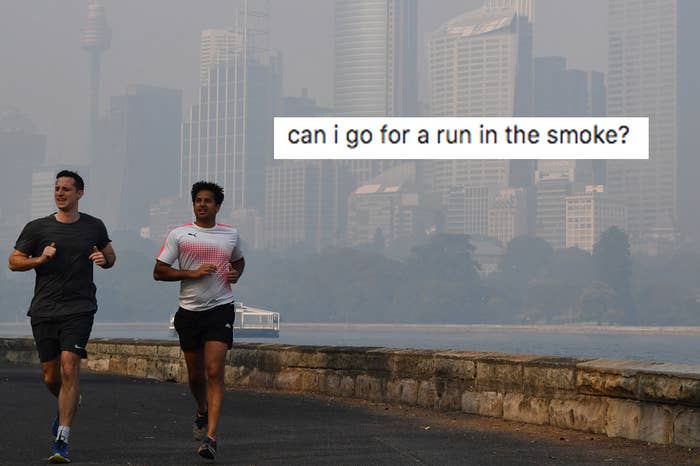
Thompson: At the end of the day, what we are breathing in is hazardous. If you go out and exercise, especially if you have asthma or bronchitis, all you're doing is breathing in the trigger. You're actively doing harm. If you're just going for a walk, that is bad enough but if you're going for a run you're increasing your breathing and increasing the dose you're breathing in, sometimes five or six times what you'd usually breathe in. On the really bad days, I wouldn't be going for a run.
Oliver: I wouldn't. You're exposing yourself to the smoke whether you're running or walking, you're putting your health at risk. Don't be paranoid about going outside but don't put yourself at risk.
"Do I need to keep my pets inside?"
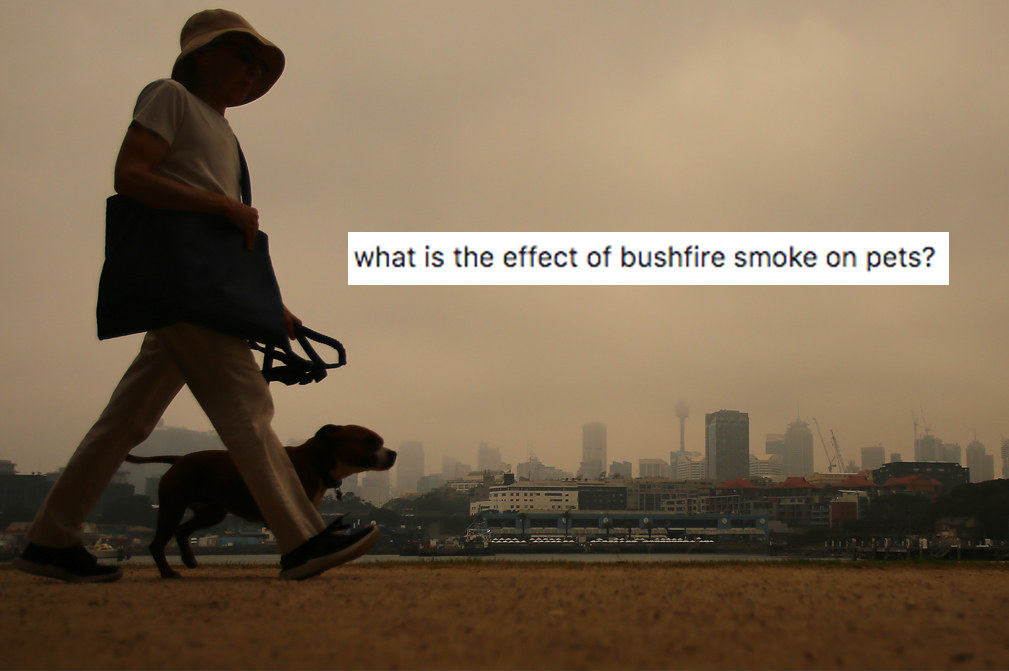
Crawford: If we are feeling affected then our animals will be affected. Their lungs are going to be irritated, their noses are going to be irritated. Particularly brachycephalic breeds like the pugs and the French bulldogs with flattened faces who can't bear heat at the best of times, and their eyes are more poppy so [their eyes] get more irritated as they're more exposed.
Cats are generally pretty sensible and will hide but all animals in general will go to places where they feel safe when they smell smoke, which means fire, and fire means danger.
Dogs and cats are less resilient [to heat] than us because they only sweat between their pads and panting is a very inefficient way of reducing heat.
If you don't feel they have to go outside just limit it and play with a ball indoors.
"Does the amount of smoke I can see correlate with how bad it is for my health?"

Murphy: Yes and no. If it doesn't look smoky at all you're probably fine, but in recent weeks in Wollongong, the worst visibility doesn't correspond with the highest levels of, say, carbon monoxide.
I would look at a combination of visibility and smell. If you can't smell it, that might be a haze that is a combination of dust and smoke, or it is heavier particles — they are less likely to cause you as bad problems as they get caught in your hair or nostrils. That distinct wood smoke smell accompanied with poor visibility is when it is the worst.
Guo: You can’t judge whether there is air pollution just by looking out the window. There is a website, [the real-time Air Quality Index] where you can check."
"Is my air purifier actually doing anything?"
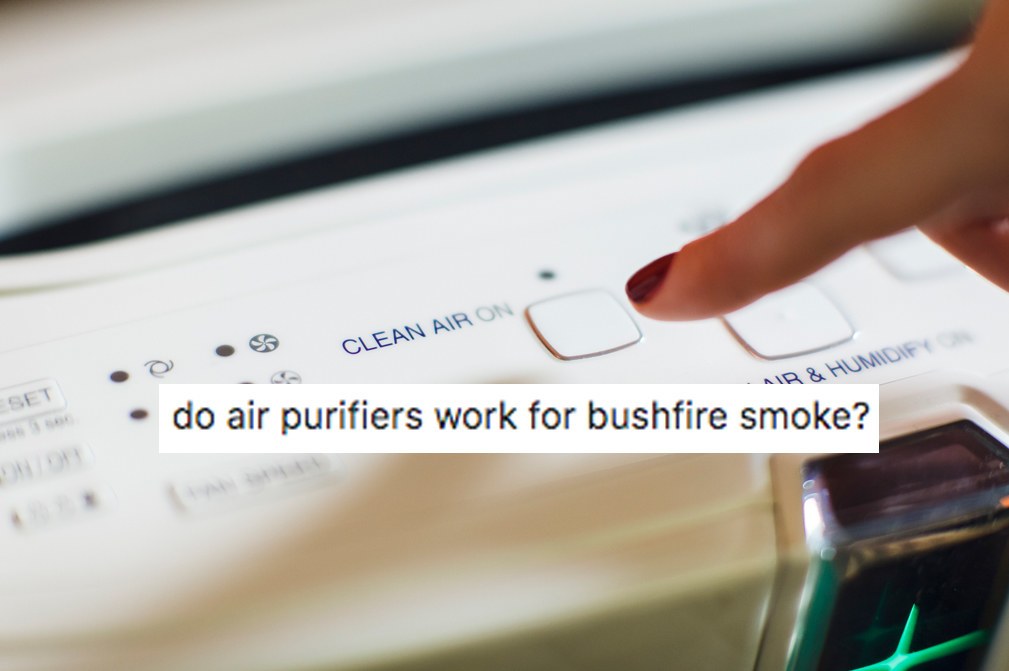
Thompson: Yes and no. If you only have a small little purifier sitting in the corner in a large room, it isn’t going to do much.
Gordon: Depending on the air purifier, they can certainly help. Air purifiers need to have a HEPA filter of 13 or above and preferably with a carbon filter as well, as those filters remove fine air particles.
Oliver: It really depends on the type of air purifier. Some of the cheaper ones don’t do very much. You have to seal the entire house in order for these filters to work.
"I have an app that shows me how toxic the air is today by showing me how many cigarettes it is the equivalent of smoking. Is this a valid comparison?"
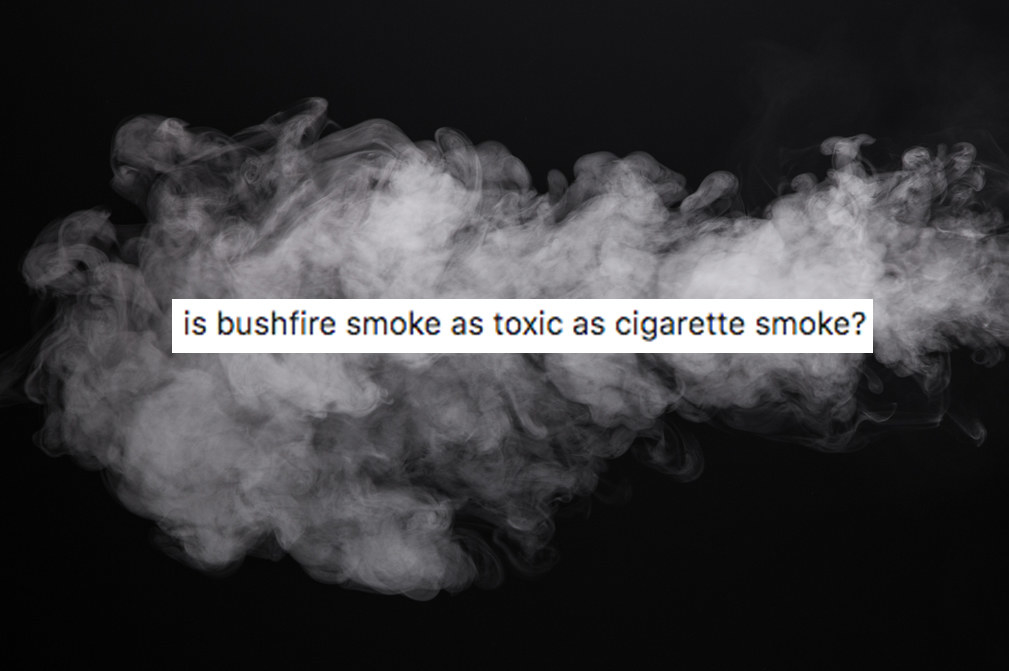
Oliver: The comparisons they do are okay. Say you live in New Zealand and you’re here in Australia for a week and it was smoky for a week and it is telling you it is the same as 40 cigarettes a day, that is not the same as a lifetime exposure of 40 cigarettes a day, it is only a week of exposure of 40 cigarettes a day.
Gordon: Bushfire smoke certainly has particles and gases in it, but it hasn’t got the chemical toxins and known carcinogens of cigarette smoke. The two types of smoke are medically different and affect the lungs quite differently. People smoking cigarettes generally do so constantly while bushfire smoke is transient and will go away.
The air quality in Australia’s capital is so bad that’s it’s the equivalent of smoking nearly 19 cigarettes a week. This is just one of the many effects caused by climate change #AustraliaBurning
Thompson: I think from the actual first principle, lungs are only designed to breathe in fresh air and it is very difficult to compare [bushfire and cigarette smoke] because they’re very different compounds, [but] we know if you’re exposed to fire smoke there is evidence that it leads to harming the actual lung.
Murphy: You’re not breathing in nicotine in the bushfire smoke so it is not completely equivalent, but it is basically just trying to say “this is what we think the impact is in terms of your health”.
"Everyone keeps telling me to get a P2 mask, but do they work? How about if they get wet?"
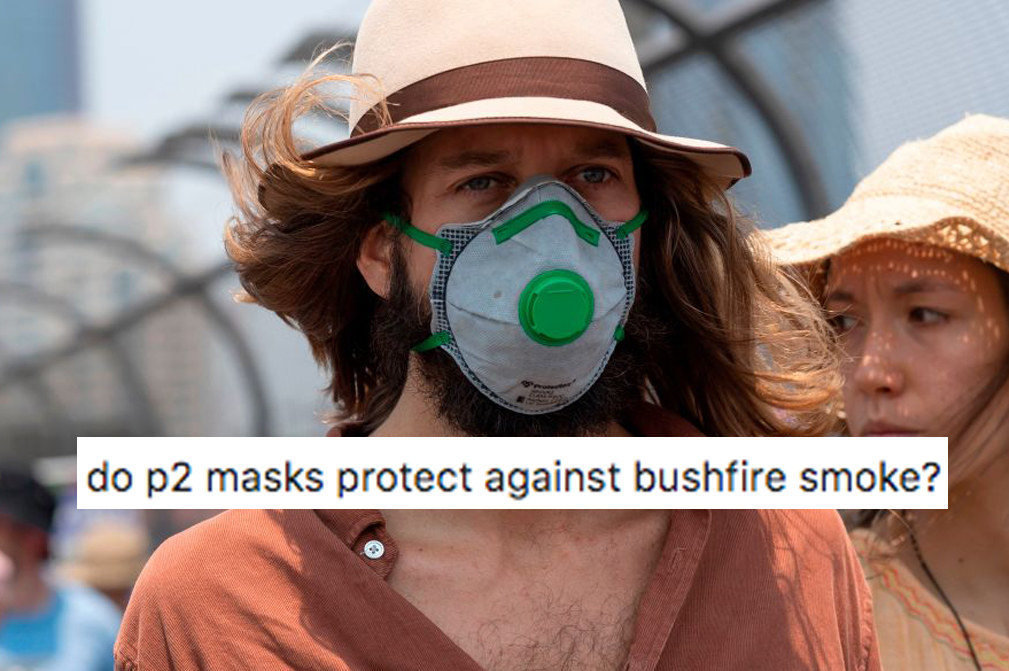
The Federal government is supplying more than 1.8 million P2 masks to vulnerable people across New South Wales, Victoria and the ACT.
Oliver: If the mask doesn't fit on your face correctly, it doesn't work terribly well. Surgical masks don't do anything. If I was going to go out and buy a mask, I would be buying a P1 rather than a P2 as it has a better level of filtration. P2 masks are more useful, say, in the building trade when you're cutting up rocks or something or you're a carpenter dealing with wood dust: they're good for that coarse filtration.
If you're close to the fire front, the standard P1 or P2 mask won't get rid of the noxious gases. Things like formaldehyde will go straight into your lungs, for that you need a mask with an extra filtration system.
Murphy: Absolutely — if you’ve got [a P2 mask] well fitted it’ll take out those particulates, but there are a bunch of other nasty gases in bushfire smoke.
Thompson: Putting a handkerchief or a bandana around your face does nothing. Any mask that filters out the 2.5 particles is what we want, so the P2 or N95 mask, but if we don’t wear them properly it's not going to work. I see all these people walking around the streets and the masks aren’t fitting properly.
Guo: If the mask is wet you need to change masks or dry it out before it is effective again.
"What is the bushfire smoke doing to my kids?"
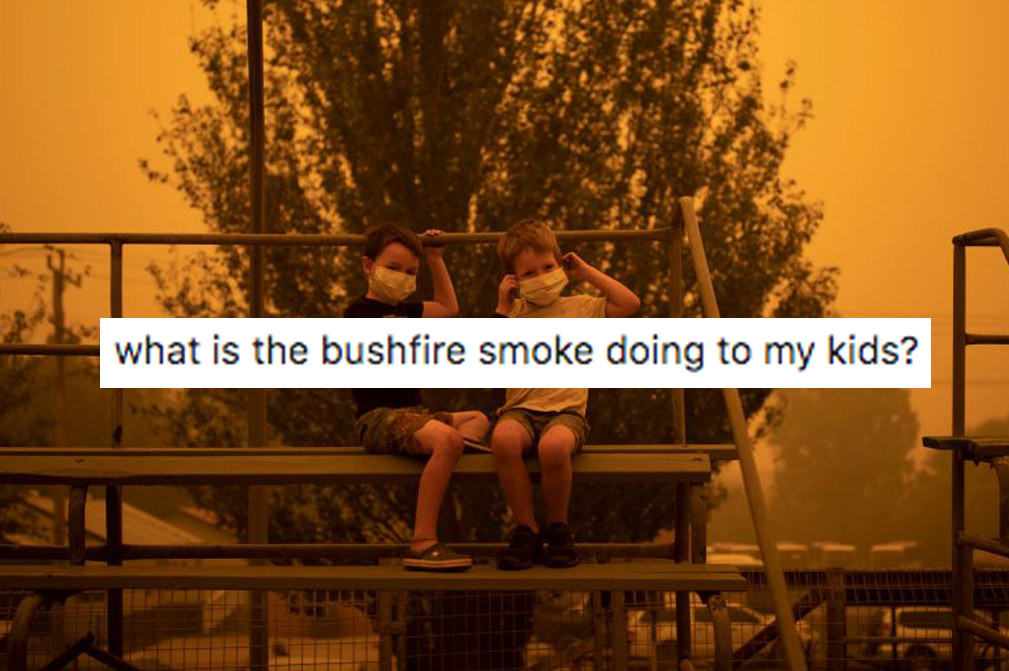
Oliver: The bit of data people often turn to is that in the developing world, where people use wood to cook their food and they're exposed to this smoke every day, children have more respiratory infections in the first year of life than children elsewhere. So there are effects in small children when they are exposed to high levels of pollution.
Thompson: We know from the Hazelwood mine fire that harm has been done to kids [exposed to weeks of smoke] and the long-term longitudinal studies on lung function show that if your lung function is low it stays low, so we don’t want to give children a bad start because lungs aren’t really going to repair.
Guo: There is a subtle effect, a daily increase in air pollution, which will reduce lung function and increase their risk of symptoms of some respiratory diseases like asthma. And it increases their blood pressure and affects eye health. There is a long-term effect, which might occur after several months of bushfires, where the air pollution might increase the child’s future risk of developing cardiovascular disease, diabetes and respiratory diseases.
Guo referred to his own research, which found children living in highly polluted parts of Shanghai had a greater chance of developing autism spectrum disorder.
"Should I use an inhaler even if I'm not a diagnosed asthmatic?"
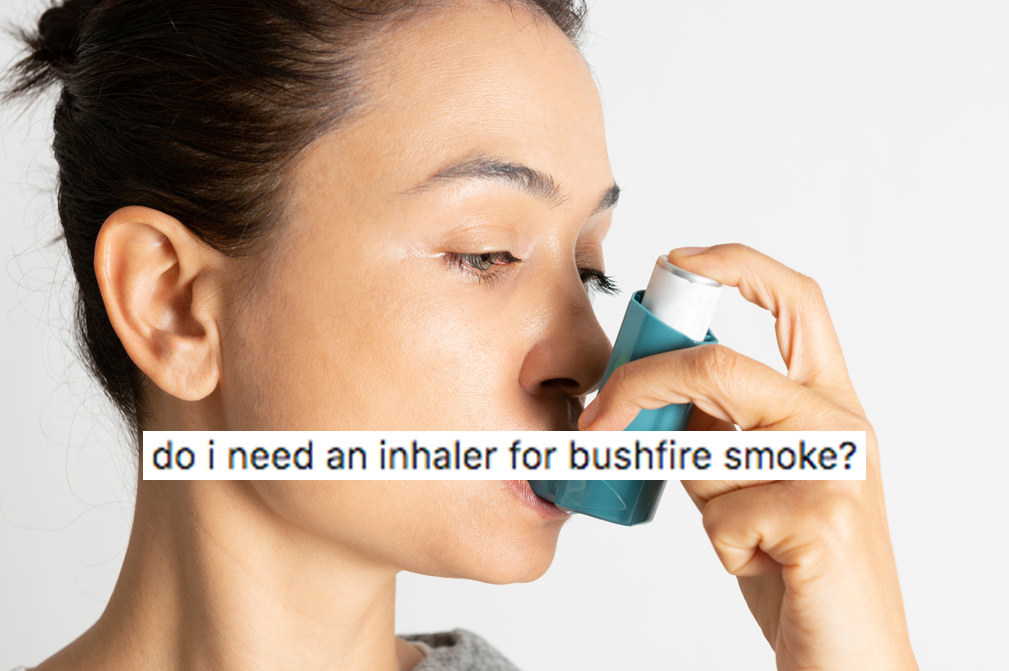
Gordon: No-one should use asthma medications unless they’ve got a diagnosis. If they are experiencing symptoms that are very real to them, like being short of breath or coughing, they need to see a doctor and use [asthma medication] as prescribed.
People with asthma need to continue to take their prescribed medication, follow their asthma action plans and if symptoms get worse, they need to go to their doctor.
Thompson: What concerns me is even [asthmatic people] are taking a lot of reliever medication like Ventolin and there is a worldwide push to try and get them off relievers and put them on preventers, because relievers can have harmful effects on the lungs.
"What are the risks for pregnant women? Especially asthmatic ones!"
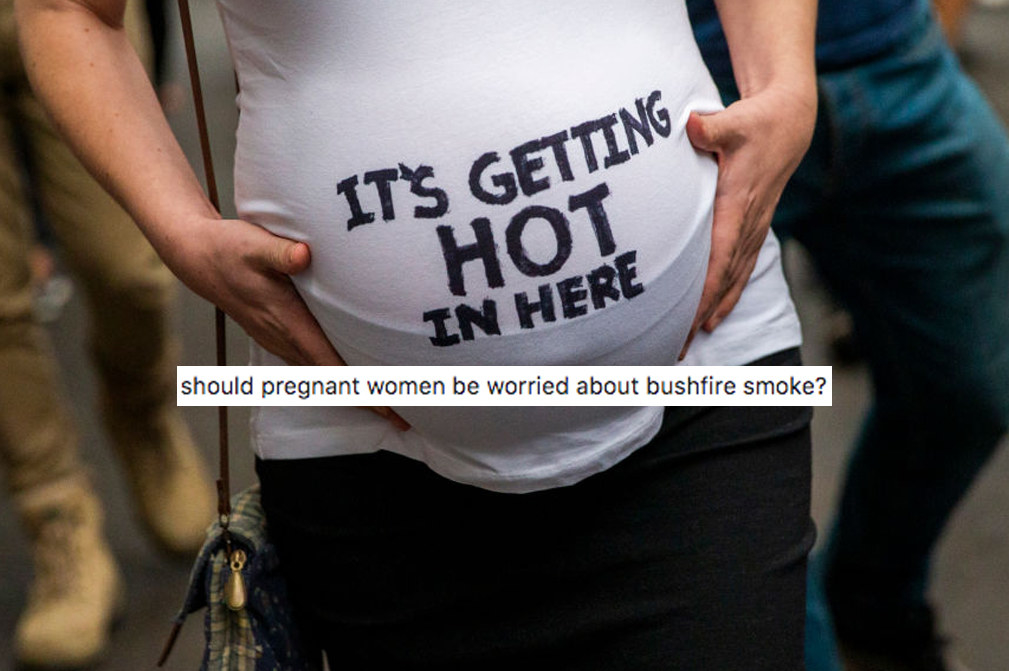
Khot: Women who are pregnant should seek masks and stay indoors as much as possible and not expose themselves to bushfire smoke. Almost all asthmatic medication is safe during pregnancy and should be taken. Having an asthma attack and becoming low in oxygen is worse for the baby than taking Ventolin.
Khot directed readers to a statement from the Royal Australian and New Zealand College of Obstetricians and Gynaecologists that highlights how exposure to air pollution in pregnancy has been linked to increased rates of preterm birth, decreased birth weight, hypertensive disorder of pregnancy and gestational diabetes.
Guo: Air pollution increases the risk of hypertension and diabetes during the pregnancy and is related to low birth weight, preterm birth or stillbirth.
Gordon: Many people who are pregnant can have asthma and as long as it’s well controlled and well managed it poses no greater risk. If they do have asthma and they’re pregnant, they need to continue with the prescribed asthma medications.
Oliver: If you’re pregnant and have asthma, pollution isn’t great, but there isn’t a combined risk. If you’re exposed to smoke for a big proportion of your pregnancy, that can cause you to deliver early and can make the baby smaller than it otherwise would be.
"Is there anything I can do to improve my lung health while it is smoky? Inhaling steam or something?"
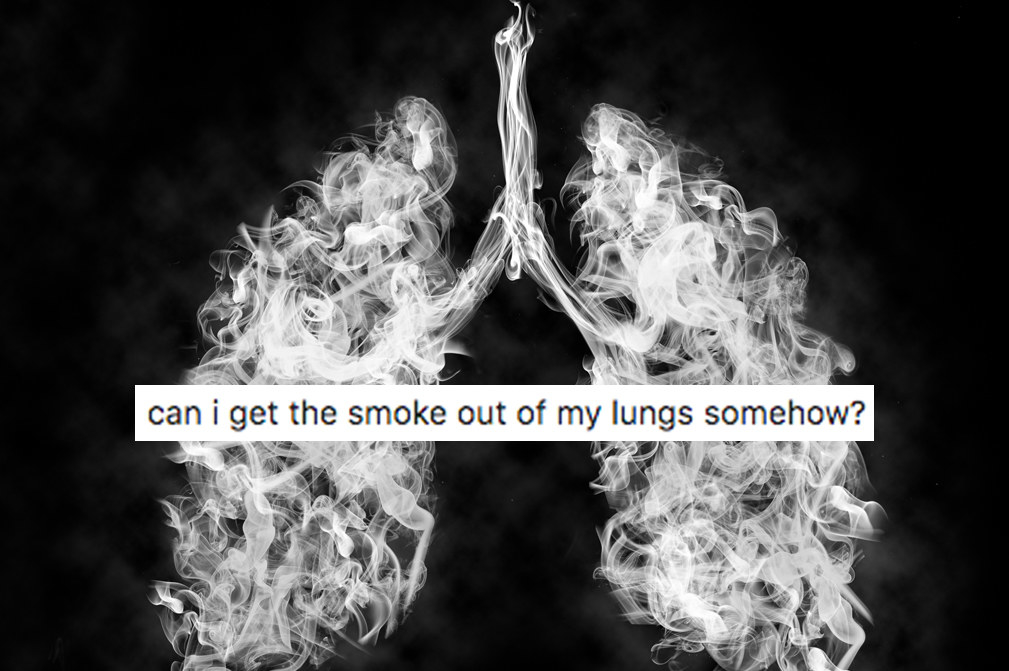
Oliver: Not that I know of. But if you have something like asthma or cystic fibrosis, it is really important that you take your medication.
Guo: They could eat healthy food and vegetables like cauliflower, broccoli, fresh fruit and fish oil to help with lung and cardiovascular health.

